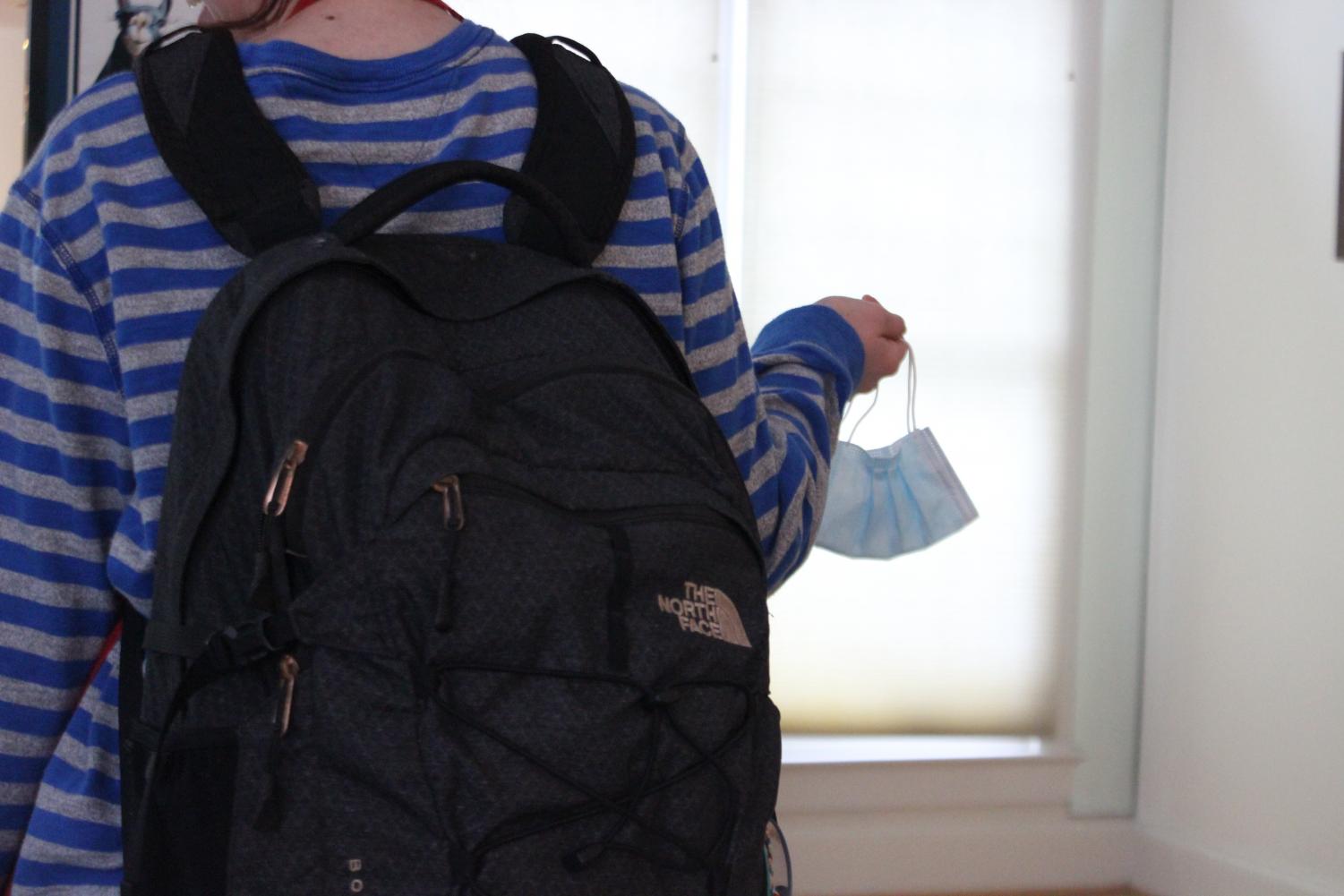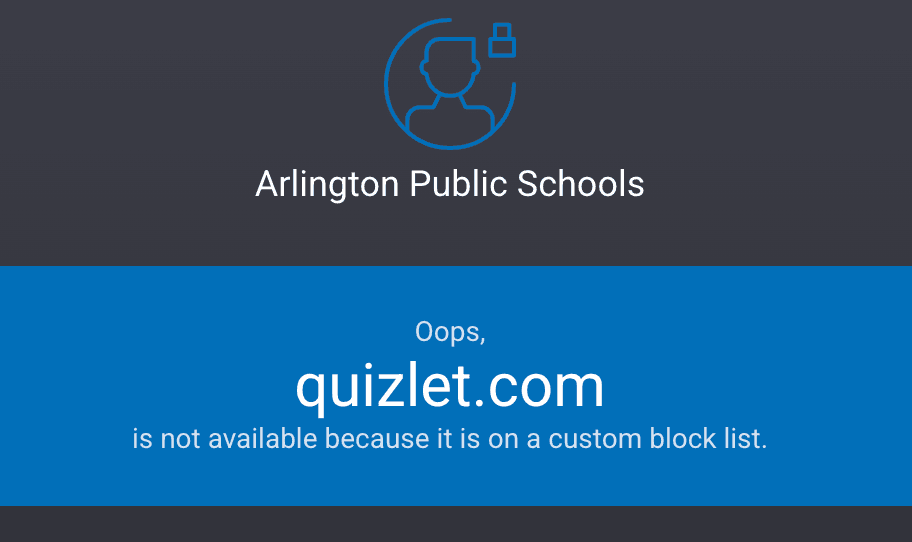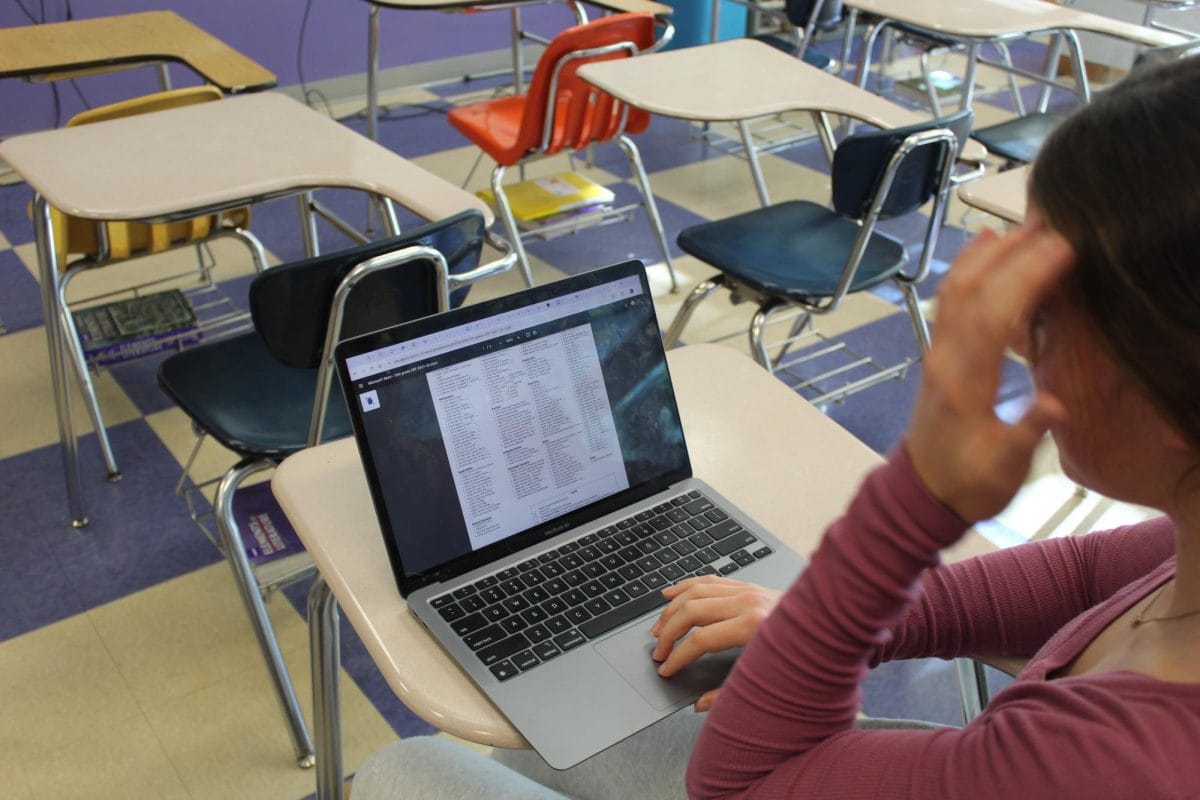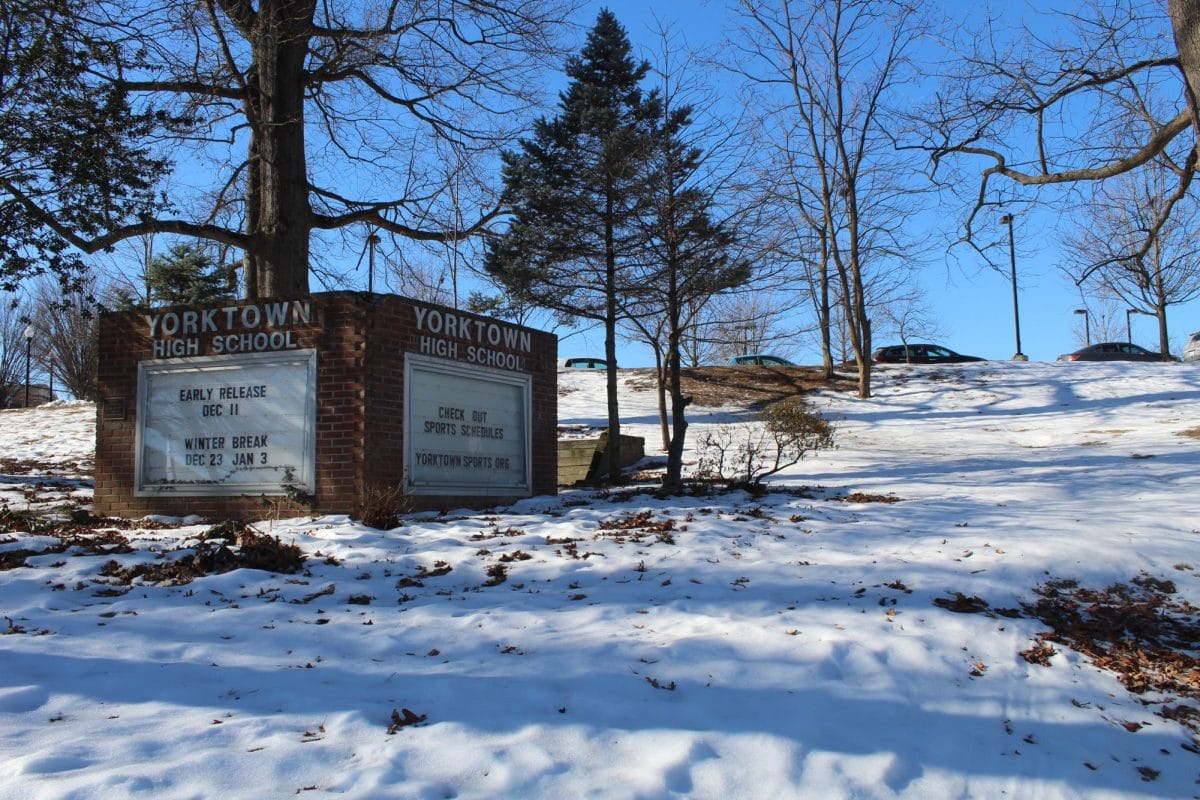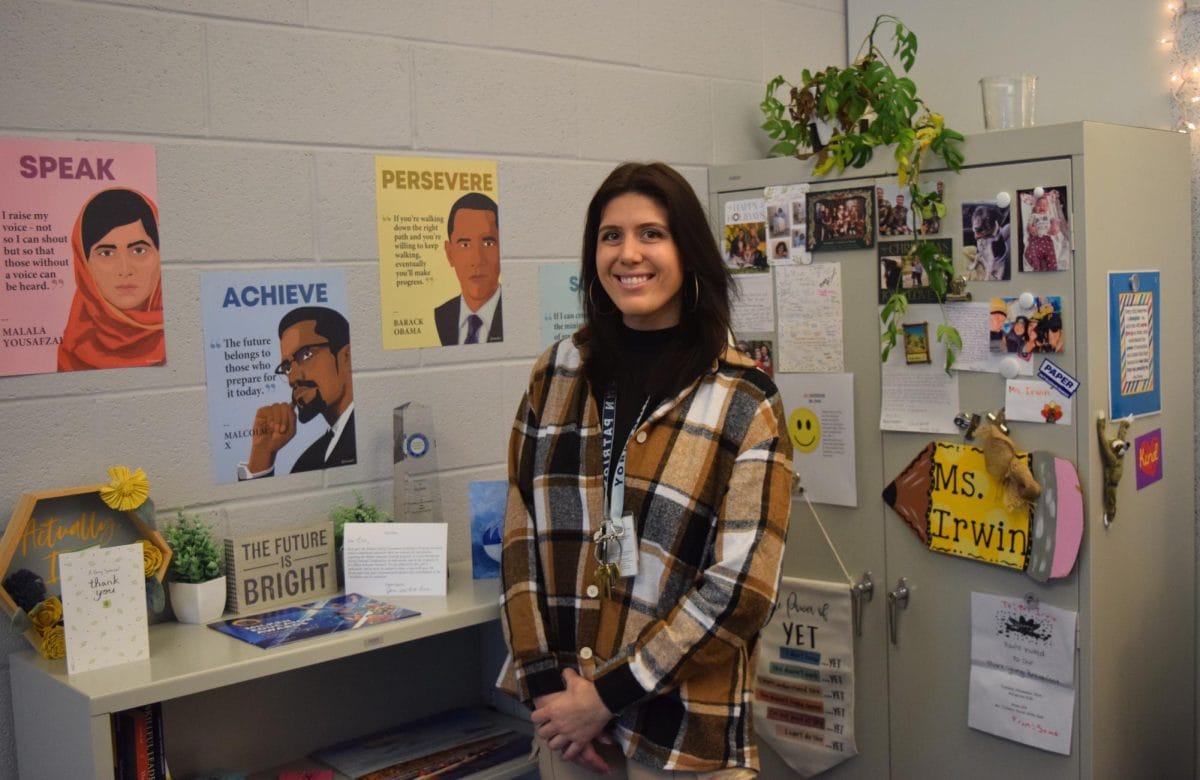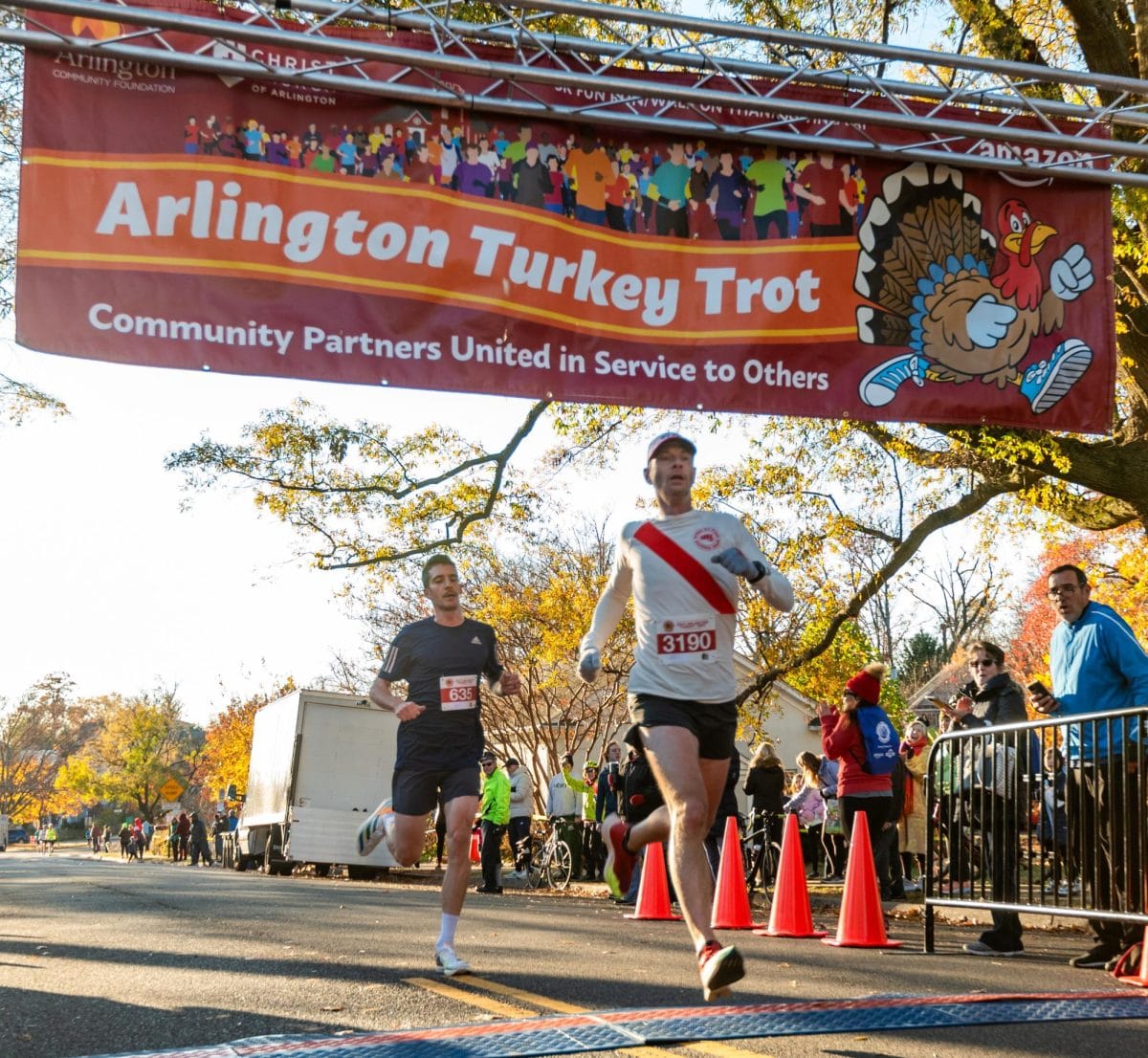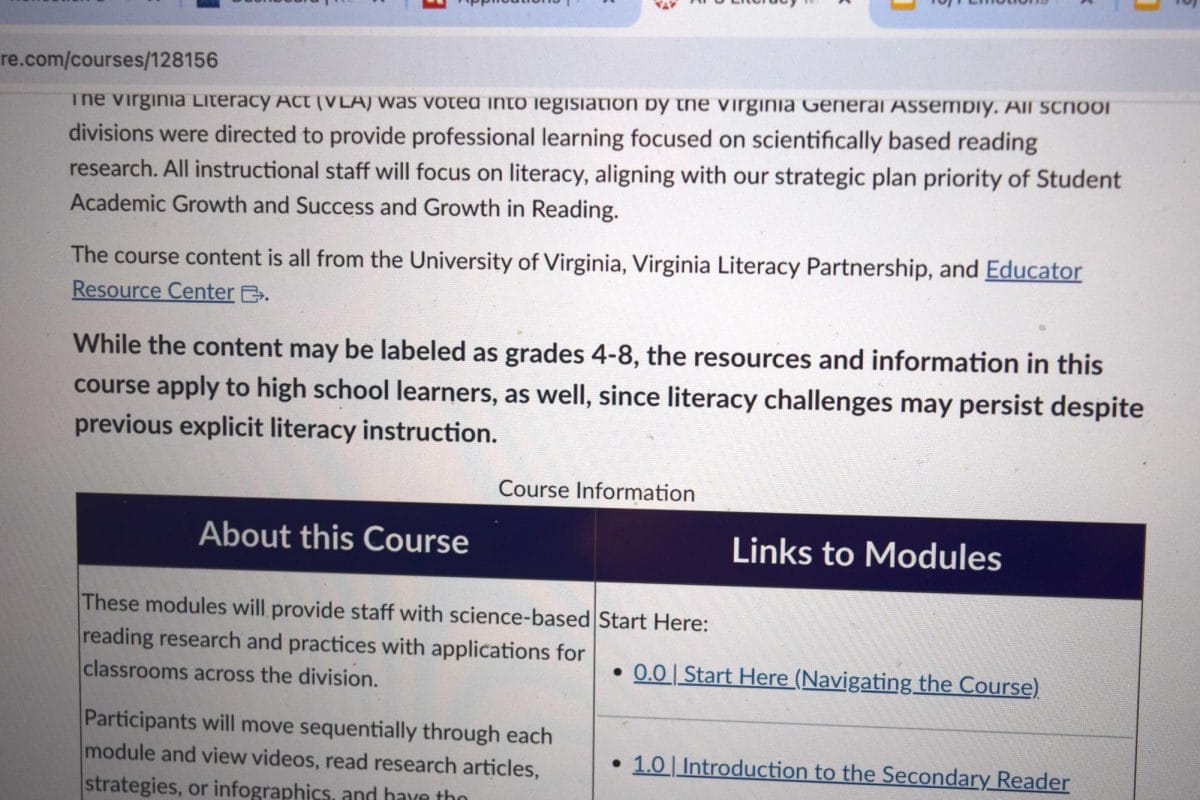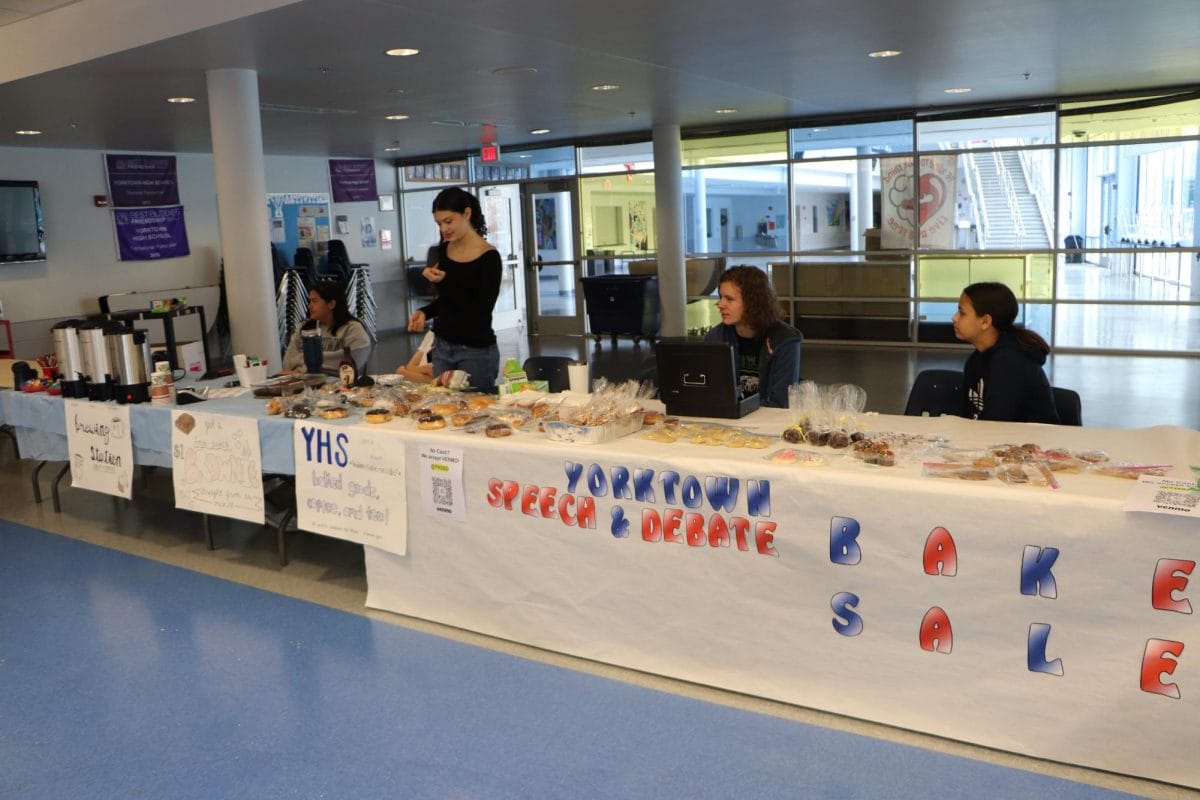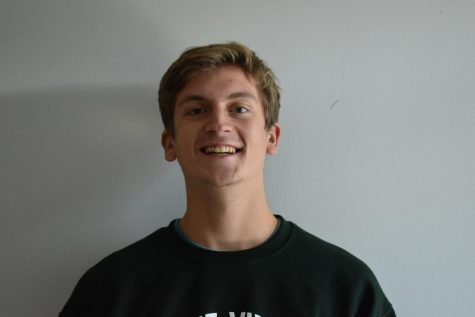On February 9, Arlington Public Schools (APS) Superintendent Dr. Francisco Durán announced the phased return dates for students who have opted into the hybrid learning model. Almost a year after the pandemic first shuttered our school buildings, many students will finally resume in-person learning.
The first of the staggered dates is March 2, when preschool through second grade will start. Grades three through five, as well as sixth and ninth grades, will go back on March 9, and remaining secondary students will return on March 16.
Grades three through 12 will learn via the concurrent instruction model, meaning they will keep their current teachers and schedule regardless of whether they are in-person or virtual. Preschool through second grade students will likely see a change in teachers.
Students will be split up into three groups: virtual learners, Cohort A and Cohort B. Cohort A will be learning in person on Tuesdays and Wednesdays, while Cohort B will be in buildings on Thursdays and Fridays. Mondays will remain asynchronous days, with teachers available for office hours and other assistance. At Yorktown, Patriot Period will continue.
Durán intended to announce the dates on February 18, but Virginia Governor Ralph Northam urged school districts to offer some form of in-person instruction by March 15. Northam’s target date was an expectation, rather than an order, and thus it is unclear whether districts would face any penalty for not complying with his instructions. Nevertheless, Durán aligned APS’ timeline with the statewide guidance.
The decision comes after months of debate on the return to school. Some parent groups, most notably Arlington Parents for Education, have been advocating for in-person learning for months. On the other hand, teachers have been reluctant to return without vaccinations and steadily improving health metrics.
Meanwhile, a first-quarter grades report highlighted how students, especially those belonging to certain minority groups, have struggled with distance instruction.
“We saw higher percentages of Ds and Es, particularly in certain subgroups. Our English Learner students, for example, had a significantly higher number of Ds and Es this year than last year in the first quarter,” Assistant Superintendent of the Department of Teaching and Learning Bridget Loft said.
For many students, virtual learning has been hit-or-miss. Some have developed routines and found great success; others have struggled with accountability and being productive.
“I’ve been able to pay attention in class and get all my work done, but, for some of my friends, learning through a computer is very hard. I think those are the students who will benefit most from hybrid,” junior Din Hadzihasanovic said.
“Everyone wants to be in school. Being in a classroom is fun; we wouldn’t do it otherwise. By the same token, nobody really wants to be sitting for ten hours behind a screen, talking to squares. It’s weird and different and challenging,” English teacher Brian Wiltshire said.
“Some people have succeeded, but a lot of people haven’t. Those who haven’t are definitely the most excited for hybrid. Thankfully, it seems like [APS is] really working their butts off to prepare for the return,” junior Alex Pang said.
Building Preparation and Organizing Students
APS has been preparing for the return to schools for months.
Last summer, APS used a consulting engineering firm, CMTA, to review ventilation in school buildings in order to follow federal guidelines before any students returned. CMTA assessed existing systems and evaluated the ventilation occupancy levels for classrooms, ultimately providing thorough examinations and recommendations for every school.
At Yorktown, current HVAC (Heating, Ventilation, Air Conditioning) systems were updated to include MERV-13 level filtration wherever possible — according to Principal Dr. Kevin Clark, some systems could not be retrofitted with that grade. MERV-13 filtration exceeds the federal requirements for schools, and is similar to hospital quality. The study concluded that no additional remediation was necessary for most HVAC systems, though some classrooms still required more circulation.
“Some of the rooms were identified as priorities for an in-room air cleaning device. These certified air cleaners ensure an equivalent of over five air changes per hour, which is the recommended amount of clean air circulated into the classroom. Those have been purchased by APS for all schools across the county. Every classroom will have one of those devices, which meets and exceeds the recommendations for ventilation at Yorktown,” Clark said.
The CMTA ventilation study, as well as analyses to determine how many socially-distanced students a classroom can support, helped APS determine the maximum occupancy level of rooms within schools. All three high schools have enough space to accommodate all hybrid students. At Yorktown, as of the week of February 15, there were 1,388 students signed up for hybrid. With 684 in Cohort A, 704 in Cohort B and 733 remaining virtual, the school can support every student.
However, due to particular classroom constraints, some students will be placed in overflow areas. These spaces will usually be just outside of the room. For example, a class with 14 students in a room that accommodates only 12 may have two students using desks in the hallway.
“We’re going to try and set up classrooms that need overflow spaces to be as close as possible to those classes. It might be — over the course of the period — there might be rotation of students who are working on something asynchronously, and then a group that is working synchronously with a teacher, and then they’d circulate through, so that students wouldn’t necessarily be in an overflow space the whole time. That is going to depend on the content, the instructional strategies used and the needs of the student. There may be cases where, if there are adjacent classes available, we may use adjacent classrooms,” Clark said.
Yorktown administration is deliberately looking at class sizes to minimize the need for overflow spaces.
“There are some classrooms that are a little bit bigger, so we’re looking at whether it makes sense for a teacher that has several classes with additional students to use a bigger space, to avoid some of those situations,” Clark said.
Teachers would have to judge which students sit in overflow spaces. If a student needs more support in a particular class, Clark suggests they communicate with the teacher and ensure they have a place in the room.
Some elementary and middle schools do not have sufficient occupancy levels to accommodate all students who opted-in for hybrid, even with overflow areas. Principals at many of those schools have made waiting lists for students hoping to attend in-person classes.
“The principal has had to talk to families and indicate they are not able to accommodate that student. Many principals, or most, have developed a waiting list. If, once we transition to hybrid, there are families who realize this isn’t really working for them, and they want to transition back to distance learning, that opens up a spot for hybrid learning. I will say that our principals have tried as much as possible to be able to honor the model that parents and students have requested,” Loft said.
Although it is unclear exactly how principals prioritize students on a waiting list, they are relatively short.
“[Waiting lists] would be more populated by families who maybe withdrew their students during distance learning, and now want to re-enroll them, and there’s not space for that child to be in a hybrid model. They could very well remain on a waiting list and continue distance learning until there’s room,” Loft said.
“A few parents requested to change their original selection from virtual to hybrid. At this time, [Arlington Traditional School] cannot accommodate any changes, so we are putting names on a waitlist to see if we can make changes later in the year,” Arlington Traditional School principal Holly Hawthorne said.
It is likely that a significant number of students who signed up for the hybrid model will revert back to distance learning after a few weeks, or never attend school in-person at all.
“There’s a phenomenon [in other areas] where several students recognize that, yeah they are in person, but can’t socialize in the same way, can’t eat lunch the same way. There’s not going to be congregating downstairs and in the commons area in the same way, so many students opt to switch back to distance learning. I expect to see some of that. I do think there will be some fluidity in the first couple of weeks of hybrid,” Loft said.
“People keep throwing around the number 75%. I don’t believe three-fourths of our school is going to actually do hybrid — pretty much everyone is staying virtual I think,” Pang said.
“Everyone I know either chose to stay virtual, or picked hybrid only to keep their options open,” Hadzihasanovic said.
Training and Teaching Concerns
On February 4 and 5, there were two asynchronous days of instruction while teachers around the county engaged in professional development learning. The Department of Teaching and Learning hired Catlin Tucker, an expert on blended learning — the intersection of online and in-person pedagogy — to give a presentation and offer advice. Tucker talked about a rotational model strategy.
“Maybe you start the lesson with everybody ‘together,’ [with] everyone focusing in on the same teacher or must-do [task]. Then you break up; if you’re distance then you work asynchronously on this task while the teacher works with the in-person kids, and then maybe you swap,” Loft said.
This teaching strategy will likely be utilized often; however, teachers did not find the presentation particularly helpful.
“Her presentation went on a long time, and teachers were asking specific questions about how to teach content in specific lessons, and there wasn’t enough time to answer those questions. It would have been more beneficial as a conversation than a lecture,” economics teacher Nicholas Kuppens said.
“I appreciate Loft’s support of us needing time [to gather thoughts about the advice], but the county offerings didn’t give me what I need. If I had more time to listen to more, maybe I would have found some nuggets. For example, how will I be able to talk with students in class and at home at the same time with a mask on? How do we set up our computers to get video and audio of the room, board and demo?” physics teacher Aaron Schuetz said.
Instead of relying on professional development, many teachers are preparing on their own. Schuetz and Kuppens cited Facebook as a helpful platform to find advice from peers.
“There are a few Facebook groups of [Yorktown] and APS teachers, and those are the places where I’m learning about things that can help me prepare for the concurrent model; things that our administration and central office staff seem to not really have answers for, or haven’t even thought about them being a problem,” Schuetz said.
“One of my professional responsibilities is to [prepare] on my own. That’s something, I think, professionally, all teachers should strive to do on their own. I’m reading things on my own; I’m on different chat groups, Facebook groups, and these are helping me prepare for my instruction,” Kuppens said.
Yorktown has a professional development committee, composed of both teachers and administrators, that is focused on further preparation for hybrid.
“We’re working on opportunities through that group for professional learning related to hybrid, social-emotional learning, and some of the technology schools needed to help organize the hybrid groups in the building or the groups that are at home. There will be some options for teachers, as well as time for teachers to be in the building and continue preparing and getting used to the technology tools that are needed for concurrent instruction,” Clark said.
According to Clark, teachers will engage in professional development learning on March 8. Teachers did not have any knowledge that there would be further training.
Elementary school teachers have already been introduced to new technologies that all teachers will use. According to Loft, conference microphones will be employed to ensure students from the classroom can hear virtual learners and vice versa. There will also be some form of swivel camera technology utilized to track a teacher’s movements around a classroom or in front of a board.
Non-core subjects, particularly the arts, will face particular challenges in the building. Maintaining the mandatory six-feet distance will be difficult in these classes, where group work, movement and community are typically crucial. However, the Department of Teaching and Learning has been proactive in helping arts teachers find solutions for blended learning. For example, band students will not be allowed to play their instrument in the building, so the visual performing arts content supervisor, Pam Farrell, has been helping teachers in identifying softwares to use for class.
“We’re fortunate to have financial support for music tech like SoundTrap, SmartMusic and NoteFlight. I’m looking forward to reimagining curriculum and seeing how we can continue to engage in authentic music making practices, whether through performance — might be time for us all to get hip to some percussion — composing and arranging, conducting, music journalism … Music is a big tent and there’s room for much more than just performance on a wind instrument,” band director Brian Bersh said.
Language classes will also face unique hurdles. Particular oral pronunciation is imperative when learning a language, but mask-wearing will inhibit clear diction.
“My voice does not carry well, and so I worry that students will have a hard time understanding me, even more so in French. And I know many students who speak very softly, especially in another language, that I will probably not understand when speaking with a mask. Communicating, on my end, and understanding, on the students’ end, instructions for example, which [are] already a challenge in a regular world languages classroom, may become so difficult that we may have to spend more time on written assignments,” French teacher Roseline Berger said.
Discussion among small groups also helps students master conversational skills, but that has obviously been more problematic this year.
“It was a challenge to create meaningful interactions between students online, for many reasons, such as students not speaking the target language, not using their cameras, et cetera. I am not sure what other challenges we will encounter in the classroom, especially since my plan is to mix people in groups with both in-class and online students. It is clear that students have had less guided practice all year, and honestly [I] don’t know how much we will be able to accomplish with the concurrent system,” Berger said.
Scheduling and COVID-19 Difficulties
“I really want to emphasize that we are asking our teachers and our students to do a heavy lift when we transition to the concurrent model.… None of us have ever done this before. It is a big ask to juggle kids right in front of you and kids learning from distance learning, on very different platforms, who already have different learning needs. [Additional difficulty comes from] using technology that you may not be familiar with, and having to reconfigure lesson planning to be able to support both groups equitably,” Loft said.
In addition to developing new instruction strategies for blended learning, teachers must also account for possible lost time from the transition. Most classes are already behind schedule in comparison to previous school years, so losing more instructional time could be seriously detrimental to student learning.
“This concurrent model I expect will cause a loss of about two weeks of instructional content in my AP course, on top of the roughly three weeks we are already behind because we are going more slowly this year,” Schuetz said.
Besides any concerns over pedagogy, teachers are also anxious about the possible spread of COVID-19 within schools. Despite myriad precautions and protocols, the risk of virus transmission remains.
Teachers have been receiving vaccines for weeks in a successful process through the Arlington Health Department.
“I went online; I scheduled an appointment; I walked into Syphax [Education Center] for my vaccination within two minutes of my appointment time. With no waiting, I was in and out in ten minutes. The whole process was very smoothly organized and thoughtfully set up, so I have a lot of faith and confidence in how this process is being organized, managed and delivered,” Wiltshire said.
However, some teachers will have to return to in-person instruction before their second vaccine dose becomes effective.
“I am one of those teachers who is scheduled to return before my second dose…. I won’t have full immunity, or 95% immunity. I am coming back, but I happen to be relatively healthy, relatively young, so my concerns are less than others. I do have a family who is not vaccinated, so I’m worried about bringing the virus home with me,” Kuppens said.
“I’ll be fully vaccinated by re-opening, and in that sense I’m eager to get back and engage with students, even with the limitations and problems. However, I am concerned about bringing the virus home. One in 20 vaccinated people still catch the virus. That’s about 15 Yorktown staff that would still be vulnerable,” Schuetz said.
“I know some teachers who have compromised immune systems, who have lungs that aren’t the best, that are forced to go back. I think they’re really nervous, and I’m scared for them more than myself,” Kuppens said.
“I am among the very first teachers who received the vaccine and will barely be ‘immune’ by the time we have to report to school. I know for a fact that many of my colleagues will not have received the second dose yet. To me, this is unacceptable. I strongly believe that we should only report to work when fully vaccinated and when all the other issues — air quality being one of many — are resolved,” Berger said.
Teachers with preexisting conditions or another concern that elevates their risk can get an accommodation through the Department of Human Resources to teach virtually.
“I think it’s important, given the potential stakes and the number of people in our country who have lost their lives, to respect people’s individual choices and decisions in that matter. I can only speak for myself, but we have to respect people’s personal and medical privacy and history.… I think everyone is entitled to their privacy and dignity and the intricacy of their choices being respected, regardless of why. I think the politicization of the return to work moves away from looking at people as individual humans with complex life situations,” Wiltshire said.
Virus Protocols at Yorktown
When students return, Yorktown will look very different from last March. Stickers and arrows will be littered across the floors and walls, directing students how to navigate the halls in order to avoid crowding. Reminders about mask-wearing and other protocols will be ubiquitous. Between classes, students will be maintaining distance instead of engaging in vibrant social scenes.
APS has instituted a broad range of protocols to protect students, teachers and the community. Recently, a health screen application was launched for staff to use daily.
“There’s a platform that we’re using for staff currently, that we plan to roll out for students, which is basically a short survey that indicates if you’re quarantining due to COVID or awaiting a COVID test. If any student chooses yes, the community would have access to the data from that dashboard,” Clark said.
In addition to the application, temperature checks will be conducted by attendants before boarding buses or entering the school building.
Clear protocol also exists for when a student exhibits symptoms.
“If we have a student who presents any symptoms that could be remotely interpreted as COVID, even a runny nose or mild fever or cough, instead of going to the clinic, they would go to a COVID isolation room. That room, for lack of a better description, is a second clinic that has been set up. It has a little more protection in terms of Plexiglass shielding and face shielding. A student isolates in that room, their parent is called, and then they have to leave. Any rooms that [a student] had been in, we would go back in and do a double-deep clean on things, cleaning all the desks they could have sat in, the handrails they could have touched, et cetera,” Assistant Principal Scott McKeown said.
If that student then tested positive for the virus, contact tracing would be conducted.
“There’s a contact tracing component for determining who that student who had a confirmed positive case was in close contact with over the course of any time span in an APS facility or in an APS-related activity.… Typically [close contact] means anyone who is within six feet for fifteen minutes or more,” Clark said.
No information about the student’s identity would be shared with close contacts or the community; their medical confidentiality is protected by the Health Insurance Portability and Accountability Act (HIPAA).
Ideally, there will be only a handful of close-contacts for a positive case. Although, depending on each specific scenario, an entire classroom or the entire school could potentially be transitioned back to virtual instruction.
With stringent protocols and a plethora of precautions, APS is committed to protecting stakeholders. However, some aspects of the school day remain unresolved. For example, an APS committee is still finalizing guidance for schools on how to organize lunch; however, Clark has a clear idea of how it will work.
“Lunch service will happen through the cafeteria, but we’re looking at the possibility of adding satellite distribution centers for people to pick up food closer to where they are eating. We’re going to need more space than just the cafeteria, so probably the aux gym [will be utilized]. We’ll encourage kids to eat lunch outside if it’s nice out. In terms of lunch, and having to take your mask off to eat, that’s one of the concerns with students. It will be one lunch option, and if we do have satellite locations, it will be grab and go, there won’t be options,” Clark said.
Administration is also weighing options on how to dismiss students at the end of the day — it will be impossible for hordes of students to pack the hallways at the same time, all with a common destination, as it used to be. It will likely depend on transportation routing.
“Because there’s only 11 students per bus, there will be multiple loops — a given route might have to come back to Yorktown several times for a group A, B and C. We’re going to stagger dismissal in a way that allows the initial wave of buses to load and leave, and then clear walkers and cars, and have a way for remaining bus-riders to then go to the bus loop to be taken home. Those are preliminary, it’s subject to change. The bus transportation is the biggest concern, just because whoever doesn’t get out on the first route will be waiting,” Clark said.
The multitude of unresolved plans for crucial parts of the school day highlight the uncertainty with the return. That is the nature of school during a pandemic, and everyone will have to adjust.
“We’re just going to jump in and probably screw it up a bit like we did in the fall when starting virtual. The curriculum will take a hit. Teachers will probably be even more overworked and frustrated and in many ways even less effective. But it might help some students to have a better educational experience, a better social-emotional experience, and hopefully we can do it all safely. Fingers crossed,” Schuetz said.
“While the shift in teaching models may present some major challenges, it is important to begin the beginning of the end of this unprecedented time. Schools are critical to the functioning of a community’s ecosystem, and whatever the challenges we must continue to move forward,” Wiltshire said.





































